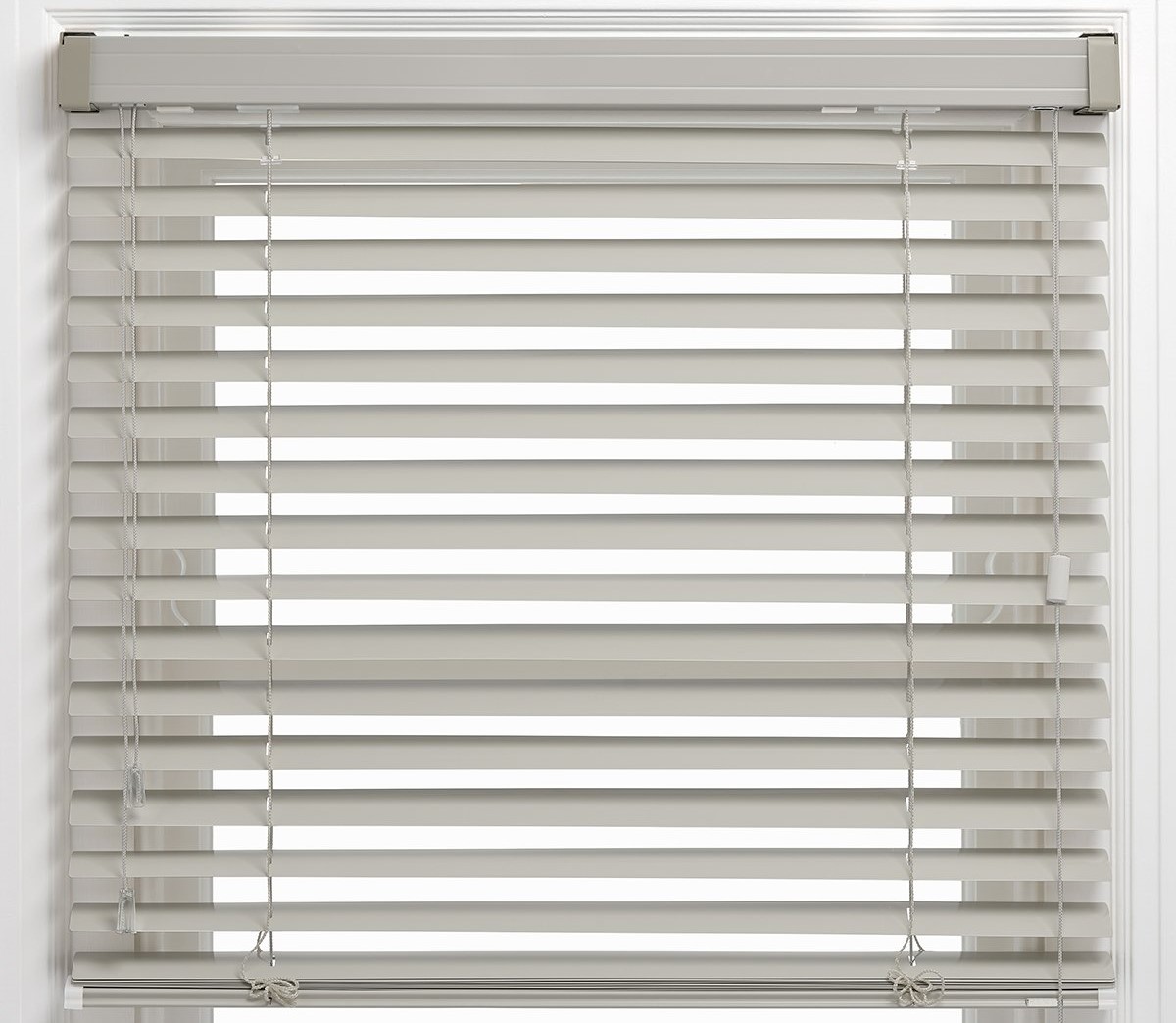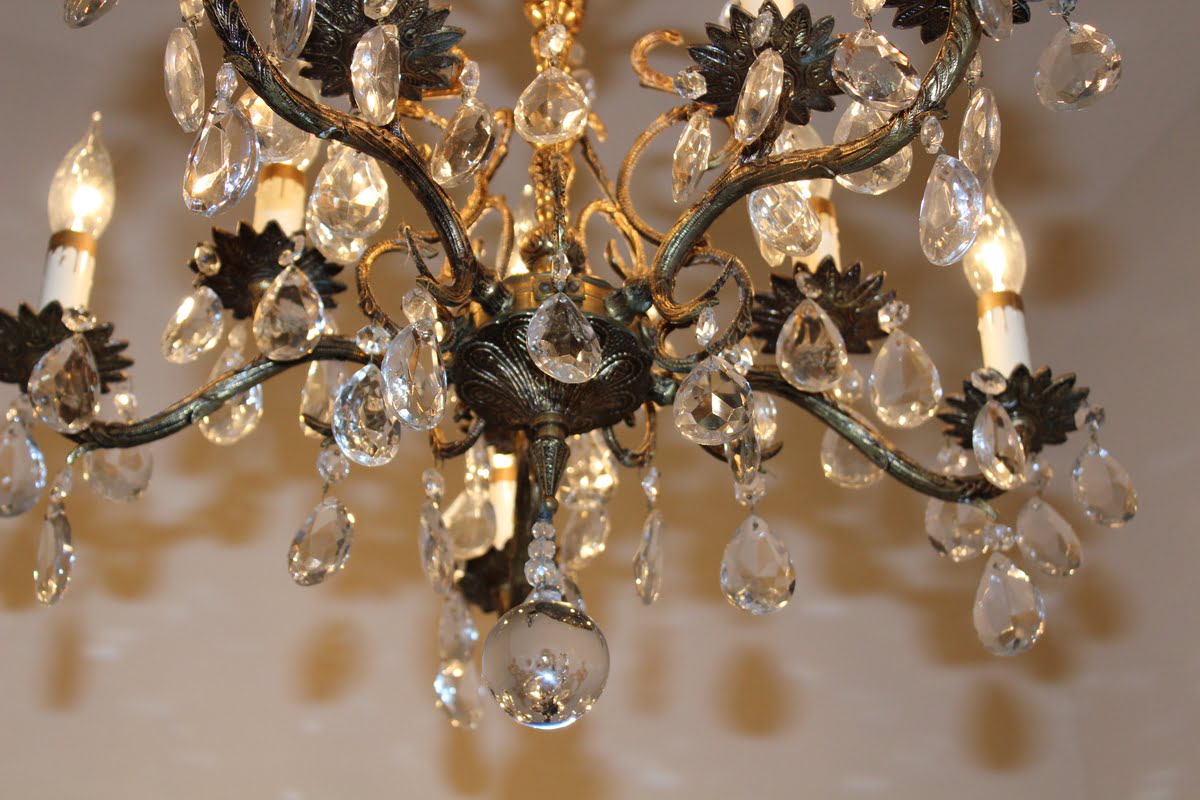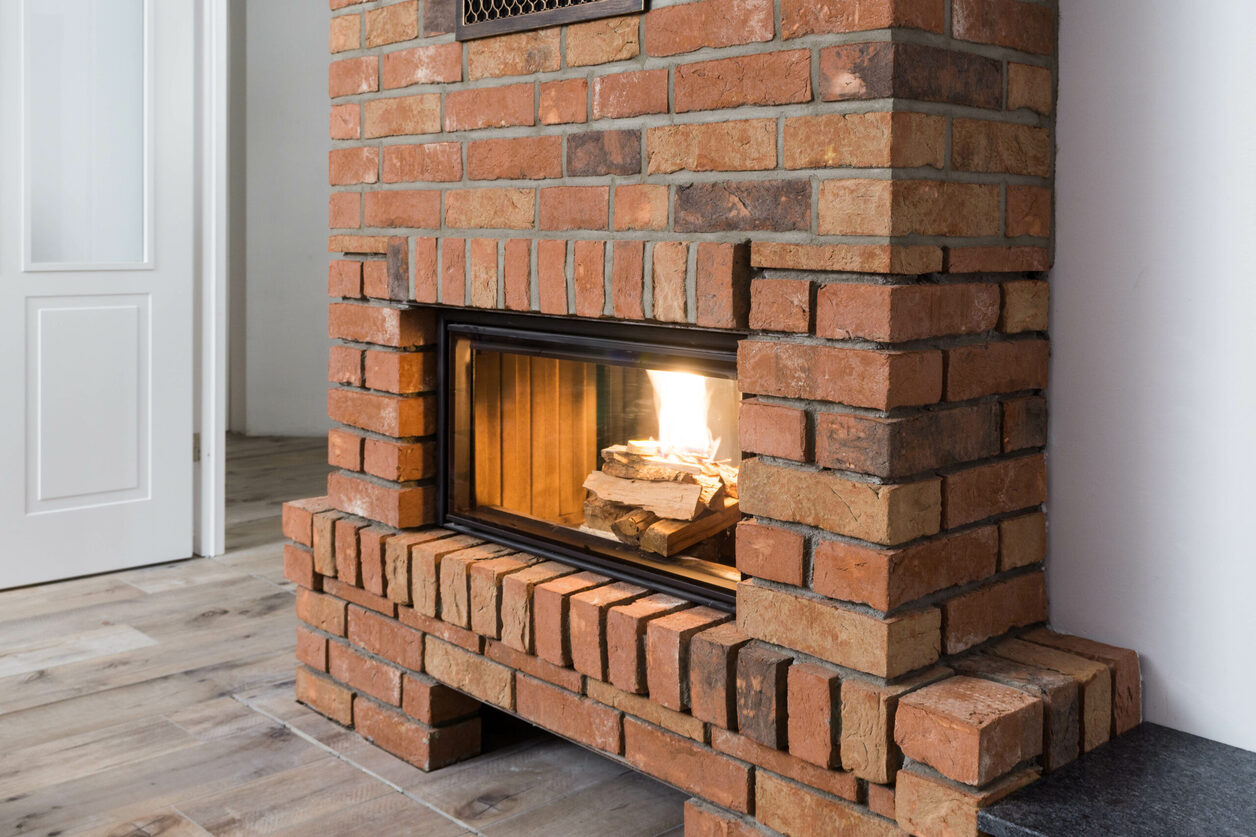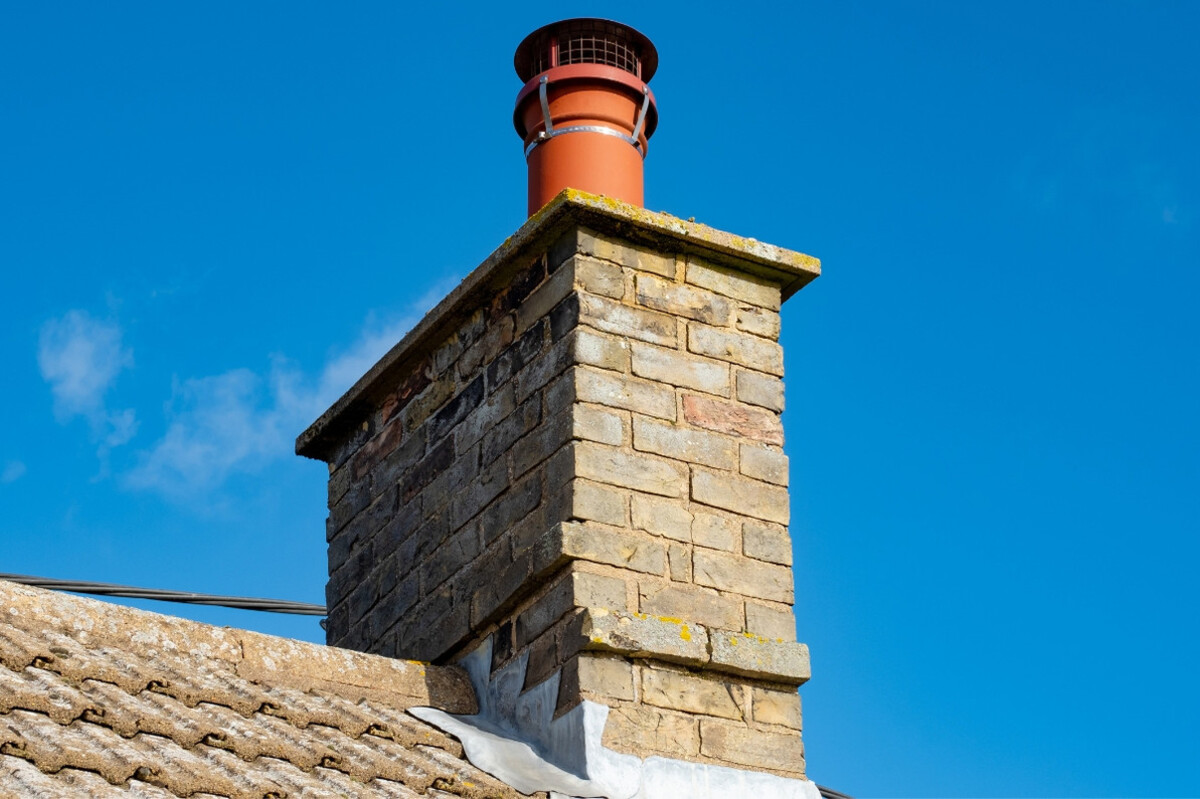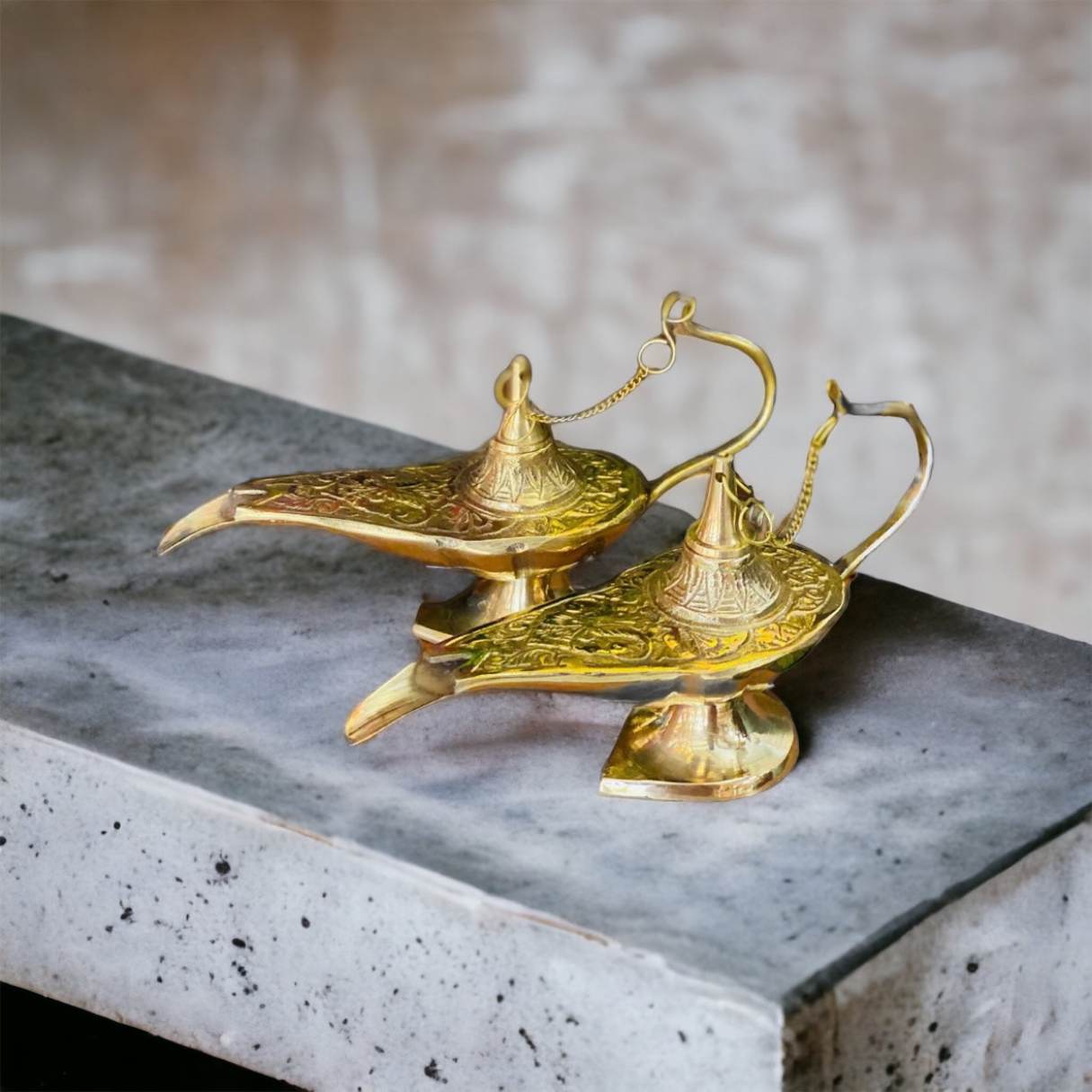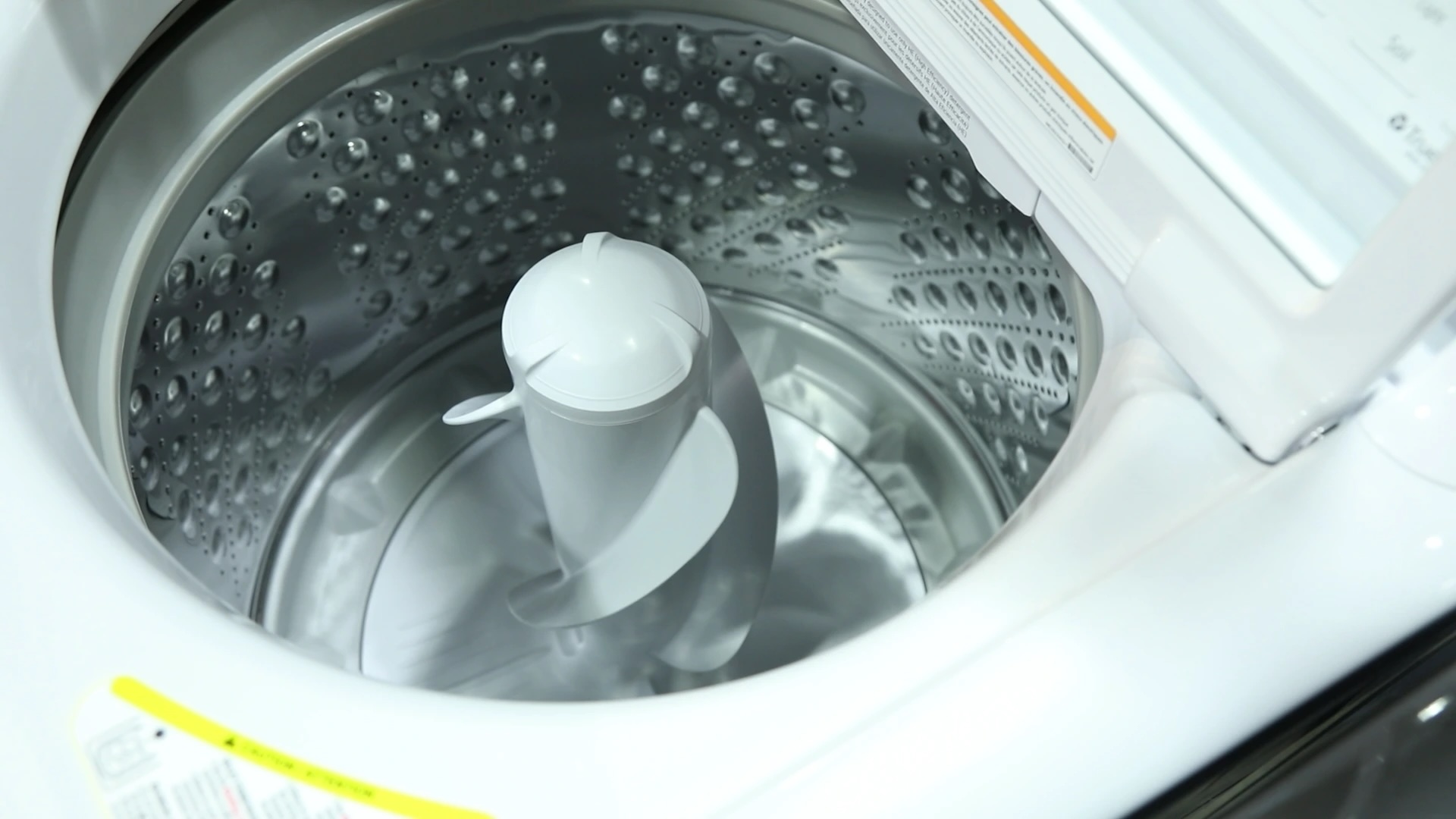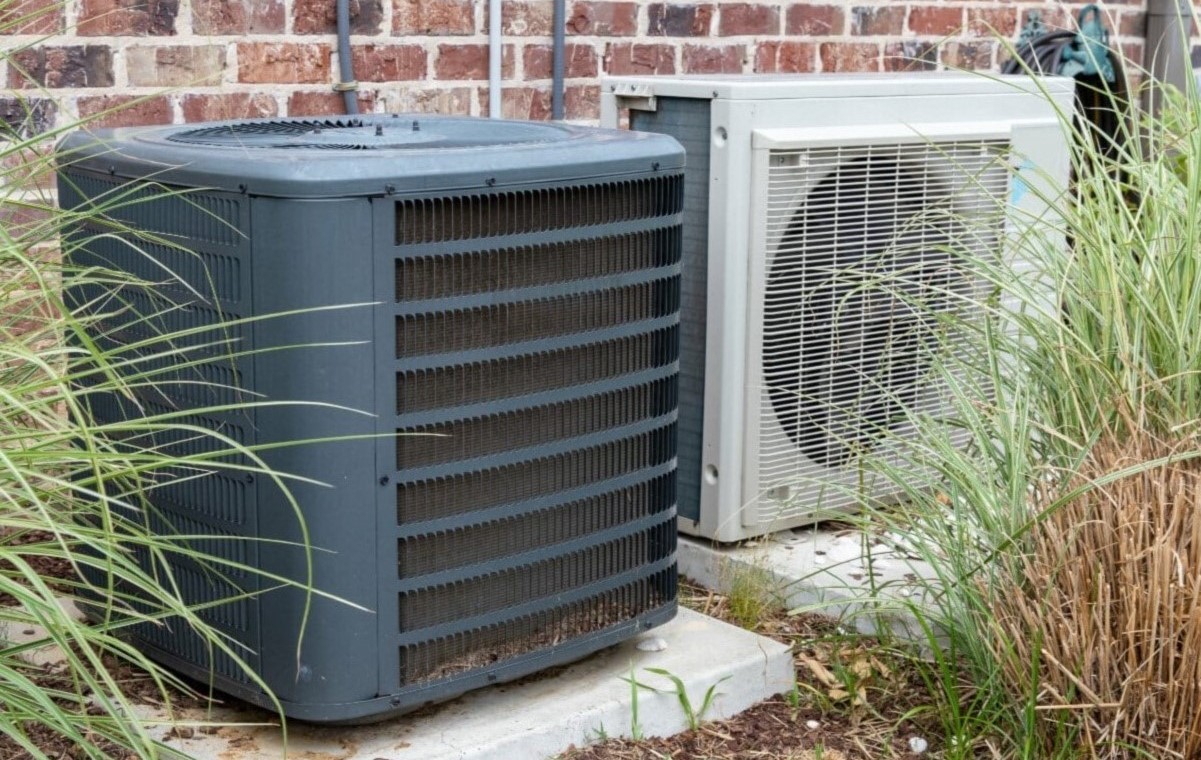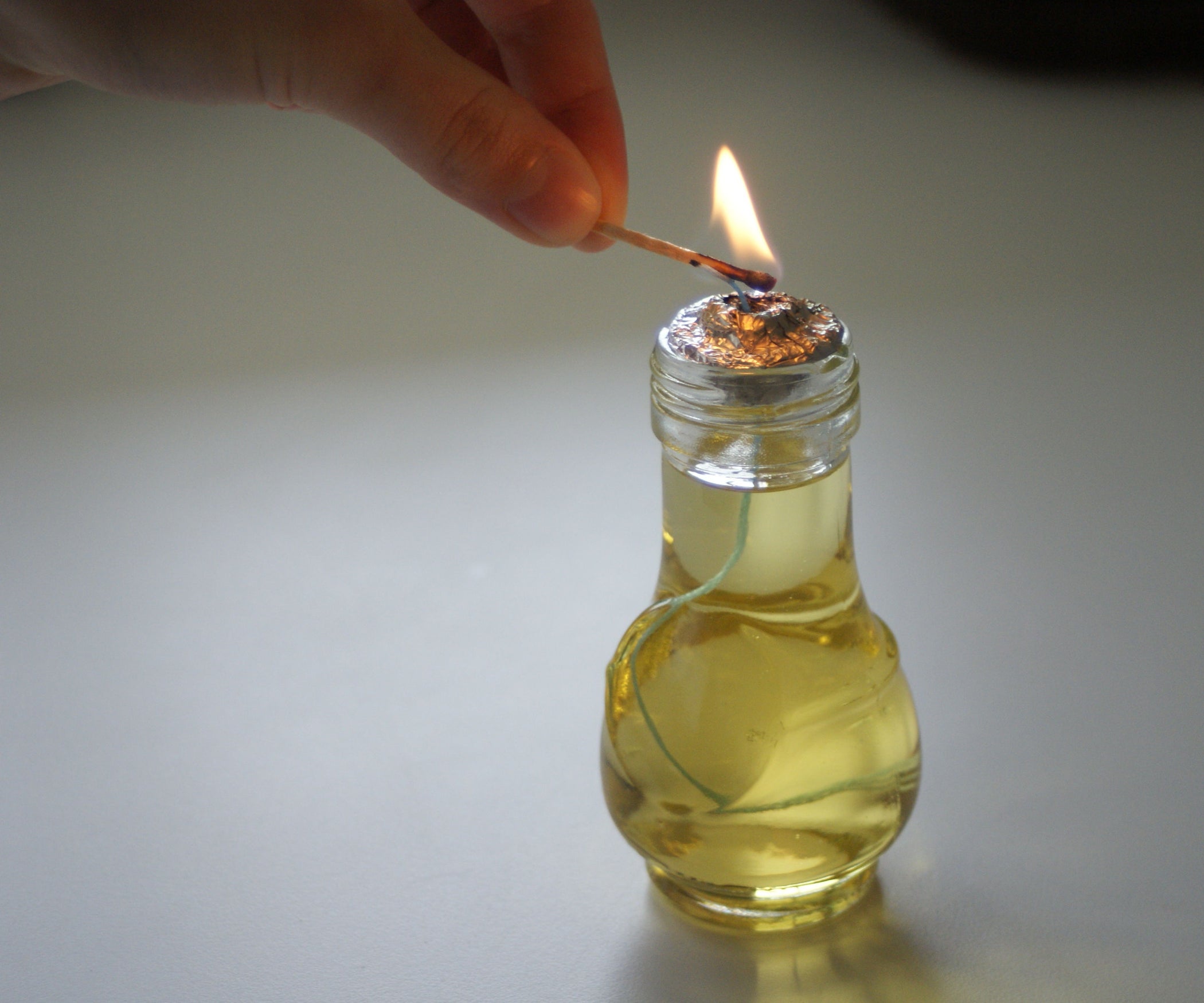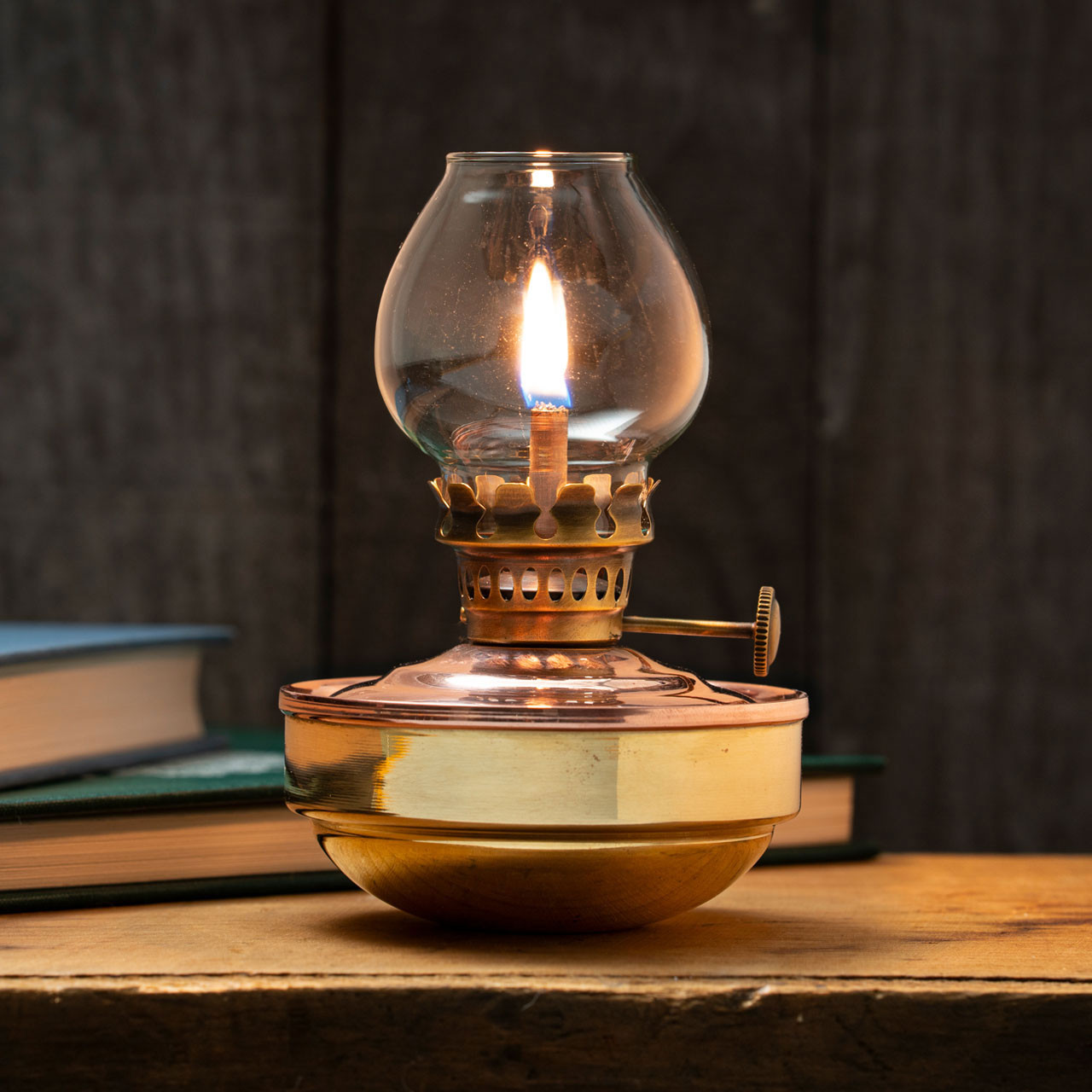

Furniture
What Are The Parts Of An Oil Lamp Called
Modified: December 7, 2023
Discover the essential components of an oil lamp and learn the names of each part. Enhance your knowledge of furniture with this informative guide.
(Many of the links in this article redirect to a specific reviewed product. Your purchase of these products through affiliate links helps to generate commission for Storables.com, at no extra cost. Learn more)
Introduction
An oil lamp is a simple and elegant source of light that has been used for centuries. Its warm glow and timeless appeal have made it a popular choice for both practical and decorative purposes in homes and establishments around the world. While the design and style of oil lamps may vary, they typically consist of several key parts that work together to create a steady and controlled flame.
In this article, we will explore each part of an oil lamp and discuss their functions, giving you a deeper understanding of how these beautiful lighting fixtures work.
So, let’s dive in and discover the intricate components that make an oil lamp an essential and fascinating piece of furniture!
Key Takeaways:
- Understanding the intricate components of an oil lamp, from the burner to the snuffer, enhances our appreciation for its timeless charm and functionality, allowing for optimized performance and maintenance.
- The various parts of an oil lamp, such as the chimney, wick, and fuel reservoir, work together to create a cozy and inviting atmosphere, evoking a sense of nostalgia and serenity in any space.
Read more: What Is The Top Part Of A Lamp Called
Burner
The burner is a crucial component of an oil lamp that houses the wick and controls the flow of fuel to create and maintain a steady flame. It is typically made of metal and is attached to the fuel reservoir or base of the lamp.
The burner consists of several parts, including the burner cone, which is a metal funnel-shaped piece that sits on top of the wick and helps to direct the flame. The burner also has a wick tube, which is a hollow cylindrical structure that surrounds the wick and ensures that it remains in the desired position.
One of the key features of a burner is the adjustable wick height mechanism. This allows the user to control the size and intensity of the flame by raising or lowering the position of the wick. By adjusting the wick height, you can create a softer, dimmer glow for a cozy ambiance or a brighter light for practical purposes.
The burner may also have a snuffer cap, which is a small metal cap that fits over the top of the burner cone. The snuffer cap is used to extinguish the flame by depriving it of oxygen. This helps to prevent any residual smoke or odor after use.
The burner plays a vital role in the overall functionality of the oil lamp. Its design and construction determine the efficiency and reliability of the lamp, ensuring a consistent and controlled flame for hours of illumination.
Wick
The wick is an essential part of an oil lamp that serves as a fuel delivery system for the flame. It is typically a braided or twisted cord made of materials like cotton or fiberglass that is designed to absorb and draw up the fuel from the reservoir to be burned.
Wicks are available in various thicknesses and lengths, allowing you to select the right one for your specific oil lamp model. The size of the wick determines the amount of fuel it can carry and the size and intensity of the flame it produces.
When lighting an oil lamp, the wick needs to be properly trimmed to ensure a clean and efficient burn. Trimming the wick involves cutting off any excess charred or burned sections, allowing for a fresh and even burn. This helps to prevent excess smoke and extends the life of the wick.
During operation, the wick is positioned within the wick tube of the burner, extending from the bottom of the reservoir. As the wick absorbs the fuel from the reservoir, capillary action draws the oil upward, where it is vaporized and burned at the top of the wick, producing a steady and controlled flame.
It is important to note that the type of fuel used in the lamp can impact the performance of the wick. Different fuels may require specific wicks designed to handle their unique properties. For example, some wicks are specially designed for use with clean-burning fuels like lamp oil, while others are designed for use with kerosene.
Regular maintenance of the wick is essential to keep the oil lamp functioning optimally. This includes periodic cleaning to remove any buildup or residue and replacing the wick when it becomes worn or damaged.
The wick is a critical component of an oil lamp that ensures the efficient and controlled burning of the fuel, allowing you to enjoy hours of warm and comforting light.
Chimney
The chimney is a distinctive and important part of an oil lamp that serves multiple functions. It is a cylindrical or conical-shaped glass or metal tube that encloses the flame produced by the lamp. The chimney is positioned above the burner and rests on the collar of the lamp.
One of the main purposes of the chimney is to protect the flame from drafts and to help create a steady and consistent burn. Its tall design allows the heat to rise and creates a chimney effect, drawing air in from the bottom and directing it out through the top. This helps to maintain a steady flow of oxygen to the flame, preventing it from flickering or extinguishing due to air disturbances.
In addition to providing stability to the flame, the chimney also plays a crucial role in reducing smoke and odor produced by the burning fuel. By enclosing the flame, it helps to contain the byproducts and directs them upwards and out of the lamp, resulting in cleaner and more efficient combustion.
Chimneys are available in different shapes and sizes to fit various lamp models. They can be plain or ornate, with decorative patterns or etchings that add to the aesthetic appeal of the lamp.
When using an oil lamp, it is important to keep the chimney clean and free from soot or residue. Regular cleaning not only ensures the proper functioning of the lamp but also helps to maintain the clarity of the glass or the shine of the metal chimney.
Overall, the chimney is a vital component of an oil lamp that helps to create a controlled, steady, and efficient flame, enhancing both the functionality and the beauty of the lamp.
Fuel Reservoir
The fuel reservoir, also known as the font or the font reservoir, is a crucial part of an oil lamp that holds the fuel used to power the flame. It is typically a container made of glass, metal, or ceramic and is located at the base or bottom of the lamp.
The fuel reservoir is designed to store a sufficient amount of fuel to provide hours of illumination. The size and shape of the reservoir can vary depending on the lamp model and its intended use. Larger reservoirs allow for longer burn times, while smaller ones are more suitable for shorter durations or decorative purposes.
When refuelling an oil lamp, it is important to use the appropriate fuel for the lamp’s design and specifications. Commonly used fuels include lamp oil, kerosene, or liquid paraffin. These fuels are chosen for their clean-burning properties and minimal smoke and odor output.
The fuel reservoir is equipped with a filler cap or plug that allows for easy refuelling without the risk of spillage or leakage. The cap is securely attached to the reservoir to ensure a tight seal and prevent evaporation of the fuel when the lamp is not in use. Some lamps may also have a secondary sealing mechanism, such as a rubber gasket or a threaded cap, for added security.
It is important to handle the fuel reservoir with care and follow proper safety precautions when refuelling an oil lamp. Avoid overfilling the reservoir to prevent fuel from spilling or coming into contact with the burner or other components of the lamp.
Regular maintenance of the fuel reservoir is essential to keep the oil lamp functioning optimally. This includes periodic cleaning to remove any residue or impurities that may accumulate over time. It is recommended to empty and clean the reservoir if the lamp has not been used for an extended period to ensure the fuel remains fresh and uncontaminated.
The fuel reservoir is a fundamental part of an oil lamp, providing the necessary fuel for the flame and ensuring a reliable and long-lasting source of light. With proper care and maintenance, the reservoir can provide years of enjoyment and illumination.
Read more: What Are Parts Of Stairs Called
Filler Cap
The filler cap is an essential component of an oil lamp that allows for convenient refueling without the risk of spillage or leakage. It is a removable cap or plug that covers the opening of the fuel reservoir, ensuring a secure and tight seal.
The filler cap is designed to be easily accessible and user-friendly. It is typically located on the top or side of the fuel reservoir, allowing for easy access when refueling the lamp. The cap is often threaded or snaps into place, ensuring a tight fit that prevents fuel evaporation and keeps the reservoir sealed when the lamp is not in use.
When refueling an oil lamp, the filler cap must be removed to access the reservoir. It is important to exercise caution and follow safety guidelines to avoid any spillage or contact with the fuel. It is recommended to use a funnel or pour spout to ensure a controlled and accurate refueling process.
In addition to providing a secure seal, the filler cap may also have additional features or mechanisms to enhance the lamp’s functionality. Some lamps have a built-in vent or pressure relief valve in the filler cap to regulate and equalize the air pressure within the reservoir, allowing for smooth and consistent fuel flow.
To ensure the proper functioning of the filler cap, it is important to keep it clean and free from any debris or residue. Regular maintenance and inspection of the cap and the sealing surface of the reservoir are necessary to ensure a proper seal and prevent any fuel leakage.
Overall, the filler cap is a vital component of an oil lamp that provides a convenient and safe way to refill the fuel reservoir. Its design and functionality contribute to the ease of use and overall performance of the lamp, allowing for a seamless and enjoyable lighting experience.
Handle
The handle is a practical feature of an oil lamp that provides a convenient and secure way to carry and move the lamp. It is a sturdy and typically curved or looped component attached to the body of the lamp, allowing for easy transportation while keeping hands and fingers away from the hot surfaces of the lamp.
The design and placement of the handle can vary depending on the lamp model and its intended use. Some handles are small and discreet, blending seamlessly into the overall aesthetic of the lamp. Others may be more decorative, featuring intricate patterns or embellishments that add to the lamp’s visual appeal.
One of the key considerations in handle design is ergonomics. The handle should be comfortable to hold and provide a secure grip, ensuring stability and ease of movement. This is especially important when carrying a lit lamp, as a secure handle reduces the risk of accidents or spills.
Handles are usually made of materials that are heat-resistant and sturdy, such as metal, wood, or a combination of both. The choice of materials ensures that the handle can withstand the heat generated by the lamp and remain durable over time.
In addition to its practical function, the handle can also contribute to the overall aesthetics of the lamp. Lamps with decorative handles can add a touch of elegance and charm to any room or space. The style and design of the handle can complement the lamp’s overall appearance and enhance its visual appeal.
When not in use or during maintenance, the handle can be folded or rotated to rest against the body of the lamp, minimizing its profile and allowing for easier storage or display.
The handle is an important feature of an oil lamp that combines functionality and style. It allows for safe and convenient transportation of the lamp, making it a versatile lighting option for various settings and occasions.
The main parts of an oil lamp are the burner, wick, chimney, and base. The burner holds the wick, which draws up the oil to be burned. The chimney helps to direct the airflow and protect the flame. The base holds the oil reservoir.
Base
The base of an oil lamp is the foundation upon which the lamp stands. It provides stability and support, ensuring that the lamp remains upright and secure while in use.
The design and shape of the base can vary depending on the style and model of the lamp. It is often made of materials like metal, wood, or ceramic, chosen for their durability and ability to withstand the weight of the lamp.
The base of the lamp is typically wider and more substantial compared to the rest of the lamp’s components. This helps to distribute the weight evenly and prevent the lamp from toppling over. A wider base also offers a larger surface area, increasing stability even on uneven or slippery surfaces.
In addition to providing stability, the base may also include decorative elements that add to the overall aesthetic of the lamp. This can include intricate carvings, decorative patterns, or embellishments that enhance the lamp’s visual appeal.
Furthermore, the base may house additional features or functionality. Some oil lamps have built-in compartments or drawers within the base to store extra wicks, matches, or other small accessories. This helps to keep everything conveniently together and easily accessible when needed.
The base may also include felt or rubber pads on the bottom to protect delicate surfaces from scratches. These pads also help to provide additional stability and prevent the lamp from sliding or shifting during use.
When cleaning or maintaining an oil lamp, the base should be given proper attention. It should be wiped and polished to maintain its shine and appearance. Any felt or rubber pads should also be checked and replaced if worn or damaged.
The base of an oil lamp serves as the solid and reliable support for the entire lamp structure. Its design, stability, and functionality contribute to the overall performance and aesthetic appeal of the lamp, making it both a functional and decorative piece of furniture.
Collar
The collar of an oil lamp is an important component that connects the burner to the fuel reservoir or font. It is a metal or ceramic ring that fits snugly around the base of the burner and is positioned above the fuel reservoir.
The primary function of the collar is to provide support and stability to the burner, ensuring that it remains securely attached to the lamp. It also helps to create a secure seal between the burner and the fuel reservoir, preventing any fuel leakage or spillage.
Collars are typically threaded or have notches to allow for easy installation and removal of the burner when servicing or refueling the lamp. The threads or notches ensure a tight fit and eliminate any potential wobbling or looseness of the burner.
In addition to its practical function, the collar can also add to the overall aesthetic appeal of the lamp. It may feature decorative patterns or designs that enhance the lamp’s visual appeal, becoming an artistic element of the lamp’s overall design.
The collar may also house additional components such as air vents or draft controls. These features allow for better control of the air supply to the flame, helping to regulate the intensity and stability of the flame. Air vents can be adjustable, allowing the user to fine-tune the flame to their desired level.
When cleaning and maintaining an oil lamp, it is important to clean the collar as well. This involves removing any dust, residue, or soot that may accumulate over time. Proper cleaning helps to maintain the appearance of the collar and prevent any buildup that may obstruct the function of the lamp.
The collar of an oil lamp plays an essential role in connecting and stabilizing the burner and the fuel reservoir. Its design and functionality contribute to the overall performance and visual appeal of the lamp, making it an integral part of this timeless lighting fixture.
Read more: What Are The Parts Of The Faucet Called?
Flue
The flue is a vital component of an oil lamp that helps to regulate the flow of air and control the burning process. It is a tube or passage that connects the burner to the chimney, allowing for the smooth extraction of hot gases and the proper ventilation of the lamp’s flame.
The flue serves as a conduit, directing the combustion byproducts up and out of the lamp through the chimney. Its design and construction play a crucial role in creating the necessary draft and ensuring a steady and controlled burn.
The flue is typically made of metal, such as brass or steel, and is positioned vertically within the lamp. It is attached to the burner at the bottom and extends upwards towards the chimney, fitting snugly in place.
One of the primary functions of the flue is to create a chimney effect, which helps to draw fresh air into the lamp and remove spent gases. The rising heat from the flame creates an upward draft that pulls in air from the bottom of the lamp, ensuring a continuous supply of oxygen for the combustion process.
The flue also helps to regulate the air intake, preventing excessive or inadequate combustion. It works in conjunction with the air vents in the burner or other components of the lamp to maintain the ideal air-to-fuel ratio, ensuring a consistent and efficient burn.
Just as with other components of the lamp, the flue requires regular cleaning and maintenance. It can accumulate soot or residue over time, obstructing the proper flow of gases. Cleaning the flue involves removing it from the lamp and using a soft brush or cloth to remove any buildup.
Proper care and maintenance of the flue contribute to the optimal performance and longevity of the oil lamp. By ensuring a clear passage for gases and a well-functioning draft, the flue plays a crucial role in maintaining a steady and bright flame.
Air Vents
Air vents are important features of an oil lamp that help to regulate the flow of air and ensure proper combustion. They are small openings or slots located on the burner or other components of the lamp, designed to allow for the entry of fresh air and the expulsion of spent gases.
The primary function of the air vents is to provide oxygen to the flame. As the fuel is burned, a continuous supply of oxygen is essential to maintain a steady and controlled burn. The air vents allow for the intake of air from the surrounding environment, ensuring that the flame has an adequate oxygen supply.
By controlling the air supply, air vents also help to regulate the intensity and stability of the flame. Adjusting the size or position of the vents can affect the amount of air that reaches the flame, resulting in a softer or brighter light. This allows the user to customize the lighting experience to their preference or needs.
In addition to controlling the oxygen supply, air vents also play a role in removing spent gases and byproducts of combustion. They allow for the expulsion of hot gases, ensuring that the lamp operates efficiently and without the buildup of undesirable fumes or odors.
Air vents can be adjustable or fixed, depending on the design of the lamp. Adjustable vents offer the flexibility to fine-tune the air intake, allowing for greater control over the flame’s characteristics. Fixed vents are set at a specific size and position, providing a consistent airflow to the flame.
Proper maintenance of the air vents is important to ensure their functionality. They can become clogged or blocked over time, hindering the flow of air. Regular cleaning and inspection of the vents, as well as removing any obstructions, are necessary to maintain optimal operation of the oil lamp.
Air vents are an integral part of an oil lamp’s design, facilitating the combustion process and helping to achieve a steady and well-controlled flame. Their presence ensures a reliable and efficient source of illumination for any space.
Snuffer
The snuffer is an important tool or feature of an oil lamp that is used to extinguish the flame safely and efficiently. It is typically a small metal cap or cover that fits over the top of the burner cone, effectively cutting off the oxygen supply to the flame and causing it to go out.
The primary function of the snuffer is to extinguish the flame without creating smoke or leaving a lingering odor. By covering the flame, the snuffer prevents any residual smoke or burning fuel vapors from escaping into the air. This helps to maintain a clean and pleasant environment after using the lamp.
The snuffer is designed to fit securely over the burner cone, often using friction or a slight overlap to ensure a tight seal. This prevents any unburned fuel from escaping and reduces the risk of accidental reignition after snuffing out the flame.
Using a snuffer is a simple and effective process. To extinguish the flame, the user places the snuffer over the burner cone while the flame is still burning. The snug fit of the snuffer restricts the oxygen supply, causing the flame to die out within a few seconds. This method of extinguishing the flame is preferred over blowing or smothering the flame, which can create smoke and potential hazards.
In addition to its practical function, the snuffer can also serve as a decorative element on an oil lamp. It may have an ornate design, unique shape, or decorative embellishments that enhance the overall appearance of the lamp. This adds to the aesthetic appeal and charm of the lamp when not in use.
Regular cleaning and maintenance of the snuffer are essential to ensure its proper functionality. It should be wiped clean and inspected for any signs of damage or buildup that may affect its performance.
The snuffer is a valuable tool or feature of an oil lamp that provides a safe and convenient way to extinguish the flame. Its design and functionality contribute to the overall enjoyment and ease of use of the lamp, making it an indispensable component.
Conclusion
In conclusion, an oil lamp is not just a source of light but a timeless piece of furniture that adds warmth and charm to any space. Understanding the various parts of an oil lamp can enhance our appreciation for its functionality and help us make informed choices when selecting or maintaining one.
From the burner to the snuffer, each component plays a crucial role in creating and maintaining a steady and controlled flame. The burner regulates the flow of fuel, while the wick serves as a fuel delivery system. The chimney provides protection from drafts and ensures clean combustion, while the fuel reservoir stores the fuel for hours of illumination. The filler cap allows for safe and spill-free refueling, and the handle provides a convenient way to carry and move the lamp. The base offers stability, the collar connects the burner to the fuel reservoir, and the flue regulates the airflow. The air vents control the oxygen supply, and the snuffer safely extinguishes the flame when needed.
Understanding the functions of these parts enables us to optimize the performance of our oil lamps. It allows us to adjust the wick height for the desired brightness, maintain clean and efficient burning with regular maintenance, and ensure safe and proper handling of the lamp.
Whether used for practical purposes or as decorative accents, oil lamps have a unique ability to create a cozy and inviting atmosphere. Their flickering flames add a touch of nostalgia and evoke a sense of calm and serenity.
So the next time you light an oil lamp, take a moment to appreciate the intricate components that work together to produce its enchanting glow. From the burner to the snuffer, each part serves a purpose and contributes to the overall beauty and functionality of this timeless lighting fixture.
Frequently Asked Questions about What Are The Parts Of An Oil Lamp Called
Was this page helpful?
At Storables.com, we guarantee accurate and reliable information. Our content, validated by Expert Board Contributors, is crafted following stringent Editorial Policies. We're committed to providing you with well-researched, expert-backed insights for all your informational needs.

